Do you have a question about the Cessna 172 R and is the answer not in the manual?
Explains symbols and warnings used in the manual for safety.
Information on keeping the POH supplement up-to-date.
Specifies take-off and maximum continuous power and RPM for the engine.
Defines minimum and maximum operating temperatures for engine oil.
Defines minimum and maximum operating temperatures for coolant.
Defines minimum and maximum operating temperatures for gearbox.
Maximum ramp, takeoff, and landing weights for C172 R normal category.
Specifies weight limits for C172 S normal category with specific modifications.
Maximum ramp, takeoff, and landing weights for C172 R utility category.
Maximum ramp, takeoff, and landing weights for C172 S utility category.
Specifies no changes for normal category maneuver limits.
Intentionally initiating spins is prohibited for utility category.
Lists permissible fuel types including Jet A-1, Jet A, Fuel No.3, JP-8, JP-8+100, TS-1.
Details total and usable fuel capacity for normal category.
Details total and usable fuel capacity for utility category.
Information for normal and utility category aircraft near fuel tank caps.
Fuel quantities for normal and utility category at the fuel selector valve.
List of emergency procedures with corresponding page numbers.
Procedures for engine malfunctions during takeoff and flight.
Procedure for handling engine fires during flight.
Detailed steps for performing an emergency landing without engine power.
Checklist for engine malfunction during takeoff with runway available.
Procedure for engine malfunction immediately after takeoff.
Procedure for handling a single FADEC warning light.
Procedure for engine fire during ground start.
Procedure for engine fire during takeoff on ground.
Procedure for engine fire during flight.
Detailed steps for performing an emergency landing without engine power.
Procedure for handling a decrease in engine power.
Guidance for performing a thorough preflight inspection of the aircraft.
Procedure for draining fuel sumps to check for contamination.
Visual check of fuel quantity in the filler.
Procedure for draining reservoir tank to check fuel grade and contamination.
Procedure for draining fuel strainer to remove water and sediment.
Checking engine oil level and securing the dipstick/filler cap.
Visual check of fuel quantity.
Procedure for draining fuel sumps to check for contamination.
Steps to complete before starting the engine.
Procedure for starting the engine at airfield elevations up to 5500ft.
Procedure for starting the engine at airfield elevations over 5500ft.
Procedure for a normal takeoff.
Procedure for a short field takeoff.
Actions to perform after takeoff, including flap retraction.
Procedure for a normal landing.
Procedure for a short field landing.
Procedure for a balked landing (go-around).
Detailed procedure for starting the engine.
Information regarding the use of external power.
Procedure for warming up the engine before takeoff.
Not applicable for this diesel engine.
Procedure to verify proper alternator operation.
Importance of checking full load engine operation during takeoff roll.
Approved flap deflections for normal and short field takeoffs.
Procedure for balked landing, including flap adjustments.
Demonstrates calculating flight performance using manual data.
Conditions and notes for short field takeoff at 953 kg.
Conditions and notes for short field takeoff at 1111 kg.
Conditions and notes for short field takeoff at 953 kg.
Conditions and notes for short field takeoff at 1111 kg.
Conditions and notes for short field takeoff at 1134 kg.
Description and illustration of the aircraft's instrument panel.
Procedure for checking and maintaining engine oil levels.
Explains symbols and warnings used in the manual for safety.
Information on keeping the POH supplement up-to-date.
Specifies take-off and maximum continuous power and RPM for the engine.
Defines minimum and maximum operating temperatures for engine oil.
Defines minimum and maximum operating temperatures for coolant.
Defines minimum and maximum operating temperatures for gearbox.
Maximum ramp, takeoff, and landing weights for C172 R normal category.
Specifies weight limits for C172 S normal category with specific modifications.
Maximum ramp, takeoff, and landing weights for C172 R utility category.
Maximum ramp, takeoff, and landing weights for C172 S utility category.
Specifies no changes for normal category maneuver limits.
Intentionally initiating spins is prohibited for utility category.
Lists permissible fuel types including Jet A-1, Jet A, Fuel No.3, JP-8, JP-8+100, TS-1.
Details total and usable fuel capacity for normal category.
Details total and usable fuel capacity for utility category.
Information for normal and utility category aircraft near fuel tank caps.
Fuel quantities for normal and utility category at the fuel selector valve.
List of emergency procedures with corresponding page numbers.
Procedures for engine malfunctions during takeoff and flight.
Procedure for handling engine fires during flight.
Detailed steps for performing an emergency landing without engine power.
Checklist for engine malfunction during takeoff with runway available.
Procedure for engine malfunction immediately after takeoff.
Procedure for handling a single FADEC warning light.
Procedure for engine fire during ground start.
Procedure for engine fire during takeoff on ground.
Procedure for engine fire during flight.
Detailed steps for performing an emergency landing without engine power.
Procedure for handling a decrease in engine power.
Guidance for performing a thorough preflight inspection of the aircraft.
Procedure for draining fuel sumps to check for contamination.
Visual check of fuel quantity in the filler.
Procedure for draining reservoir tank to check fuel grade and contamination.
Procedure for draining fuel strainer to remove water and sediment.
Checking engine oil level and securing the dipstick/filler cap.
Visual check of fuel quantity.
Procedure for draining fuel sumps to check for contamination.
Steps to complete before starting the engine.
Procedure for starting the engine at airfield elevations up to 5500ft.
Procedure for starting the engine at airfield elevations over 5500ft.
Procedure for a normal takeoff.
Procedure for a short field takeoff.
Actions to perform after takeoff, including flap retraction.
Procedure for a normal landing.
Procedure for a short field landing.
Procedure for a balked landing (go-around).
Detailed procedure for starting the engine.
Information regarding the use of external power.
Procedure for warming up the engine before takeoff.
Not applicable for this diesel engine.
Procedure to verify proper alternator operation.
Importance of checking full load engine operation during takeoff roll.
Approved flap deflections for normal and short field takeoffs.
Procedure for balked landing, including flap adjustments.
Demonstrates calculating flight performance using manual data.
Conditions and notes for short field takeoff at 953 kg.
Conditions and notes for short field takeoff at 1111 kg.
Conditions and notes for short field takeoff at 953 kg.
Conditions and notes for short field takeoff at 1111 kg.
Conditions and notes for short field takeoff at 1134 kg.
Description and illustration of the aircraft's instrument panel.
Procedure for checking and maintaining engine oil levels.
| Manufacturer | Cessna |
|---|---|
| Model | 172 R |
| Engine | Lycoming IO-360-L2A |
| Horsepower | 160 hp |
| Wingspan | 36 ft 1 in (11.0 m) |
| Cruise Speed | 124 knots (143 mph, 230 km/h) |
| Seating Capacity | 4 |
| Propeller | Fixed-pitch |
| Maximum Takeoff Weight | 2, 450 lbs |
| Fuel Capacity | 56 gallons |
| Oil Capacity | 8 quarts |
| Length | 27 ft 2 in |
| Height | 8 ft 11 in |
| Stall Speed (Flaps Down) | 47 knots |
| Rate of Climb | 720 ft/min |
| Service Ceiling | 13, 500 ft |
| Range | 696 nm (801 mi, 1, 289 km) |
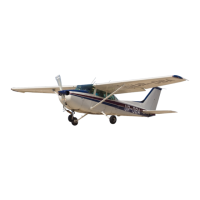
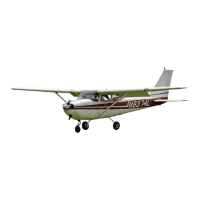
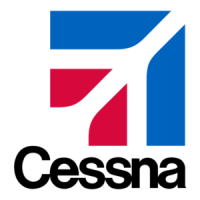

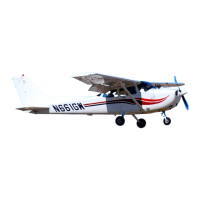

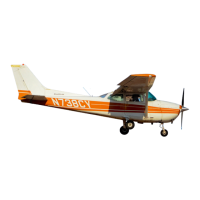
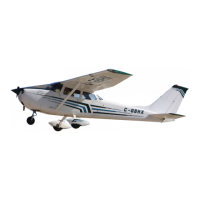
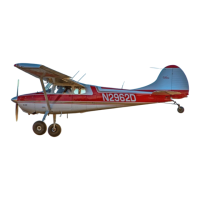

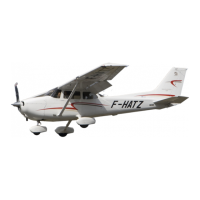
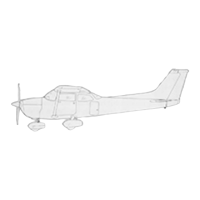
